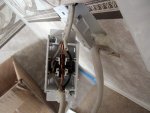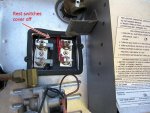Paul Douglass
Member
- Messages
- 4,991
- Location
- S E Washington State
I have a RV trailer. I've had it since 2008. The only problem I have encountered so far is a electrical switch for using the hot water tank with electricity verses gas. Actually there are three switches involved. One on the outside of the trailer that you have to turn on whether using electric power or gas. Two inside, one that lights the gas if using gas to heat the hot water tank and one if you are hooked up to electricity. The one inside, for electric power is a paddle type that is placed about 3" above the kitchen counter. Right where things get pushed up against it. It must be a very cheap paddle switch because now for the second time the switch has broken. It will not switch on. The first time this happened I took it to the RV place and had them replace it. $90!!!!!!!!!!!! WHAT A RIPOFF!! It takes them about 15 minutes to replace it, but you have to pay for an hour labor at their rate. The switch itself is $14 if I buy it from them, for the same cheap switch.
I wondering why I couldn't buy a regular switch at the BORG an install it. Maybe even forget the paddle type and go with a toggle type. I don't understand the electrical ins and outs of an RV, so not sure if there is some electrical reason a regular light switch may not work. Can anyone enlighten me before I do it and find there was a reason I should not have?
I wondering why I couldn't buy a regular switch at the BORG an install it. Maybe even forget the paddle type and go with a toggle type. I don't understand the electrical ins and outs of an RV, so not sure if there is some electrical reason a regular light switch may not work. Can anyone enlighten me before I do it and find there was a reason I should not have?







